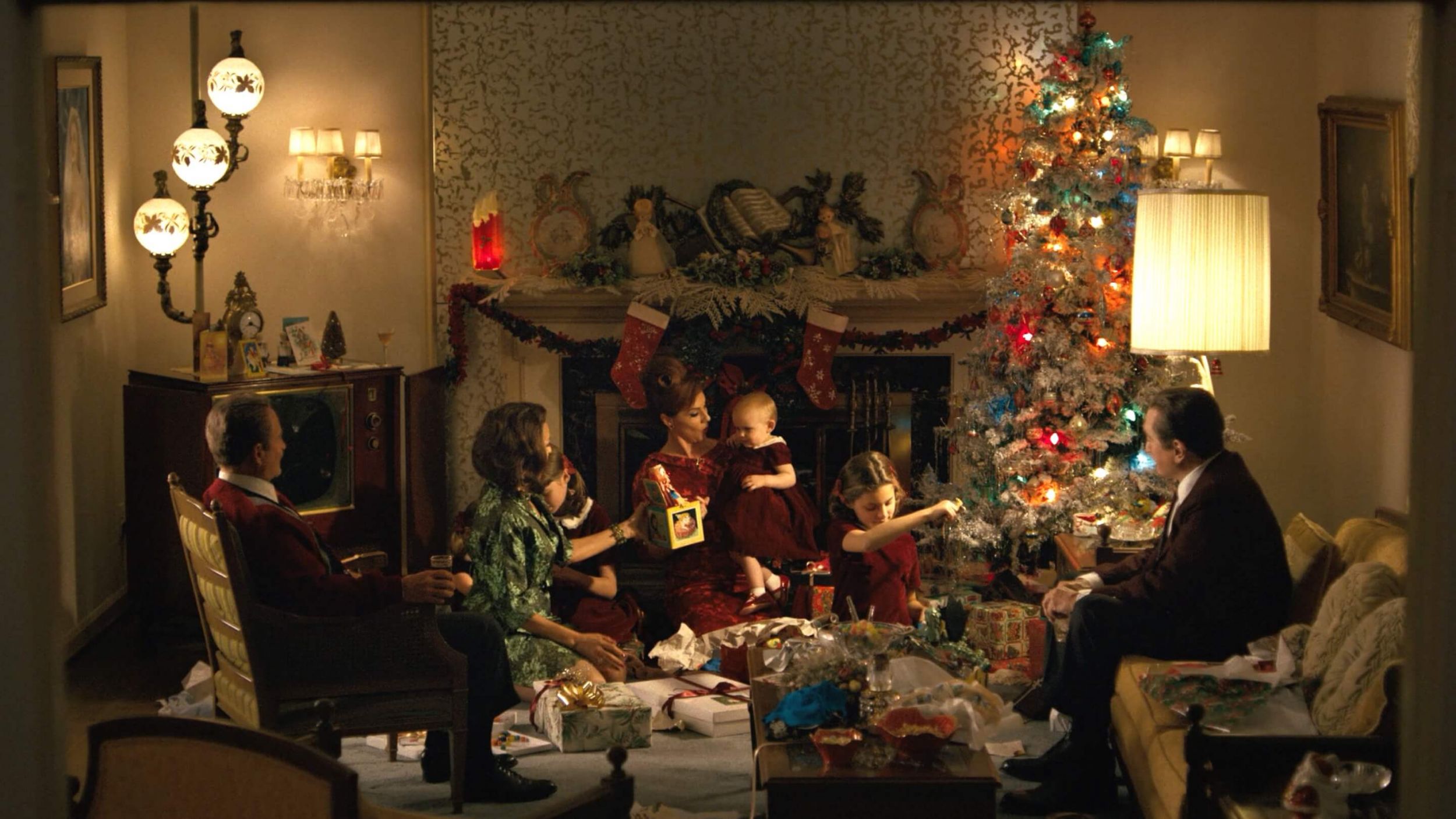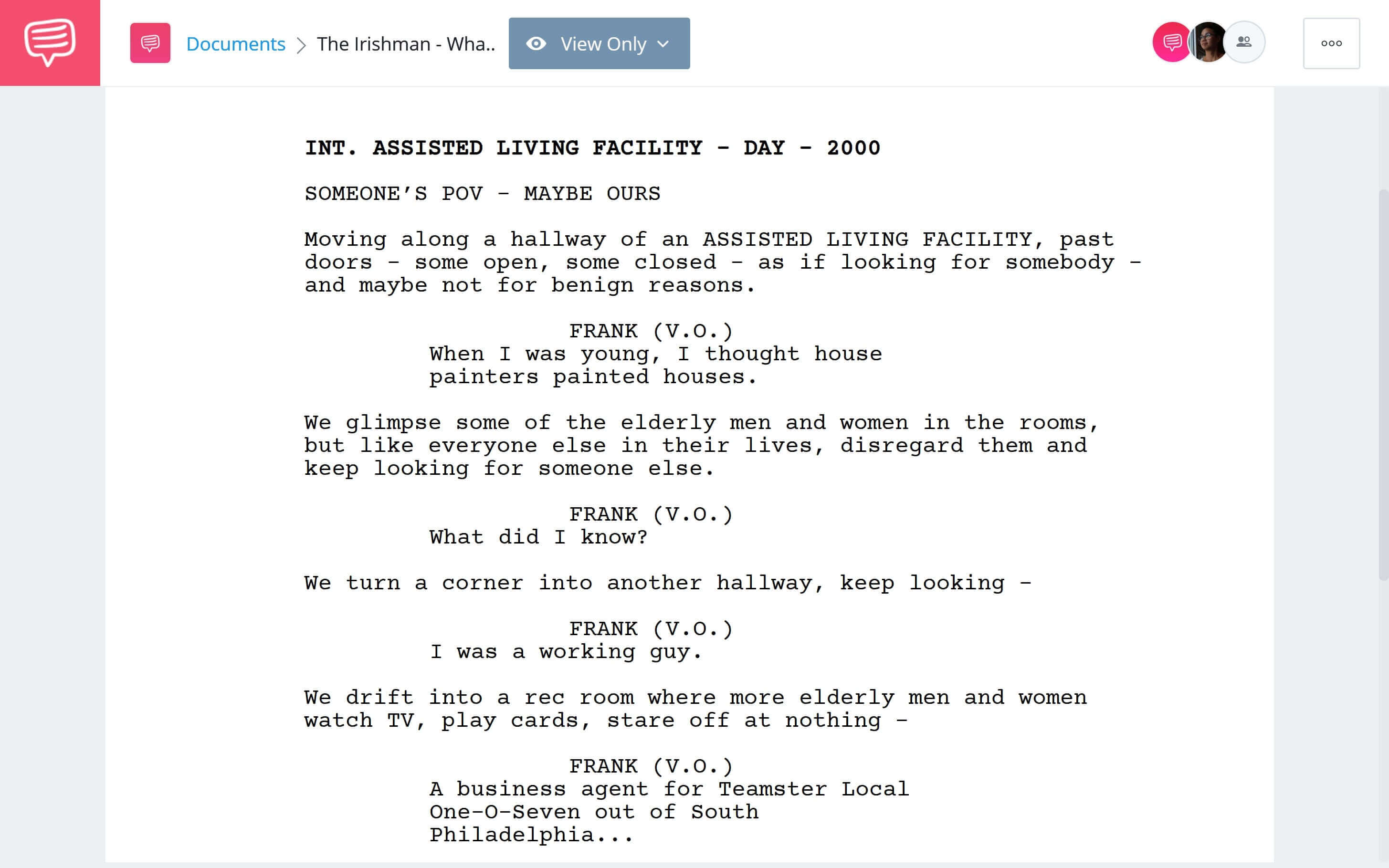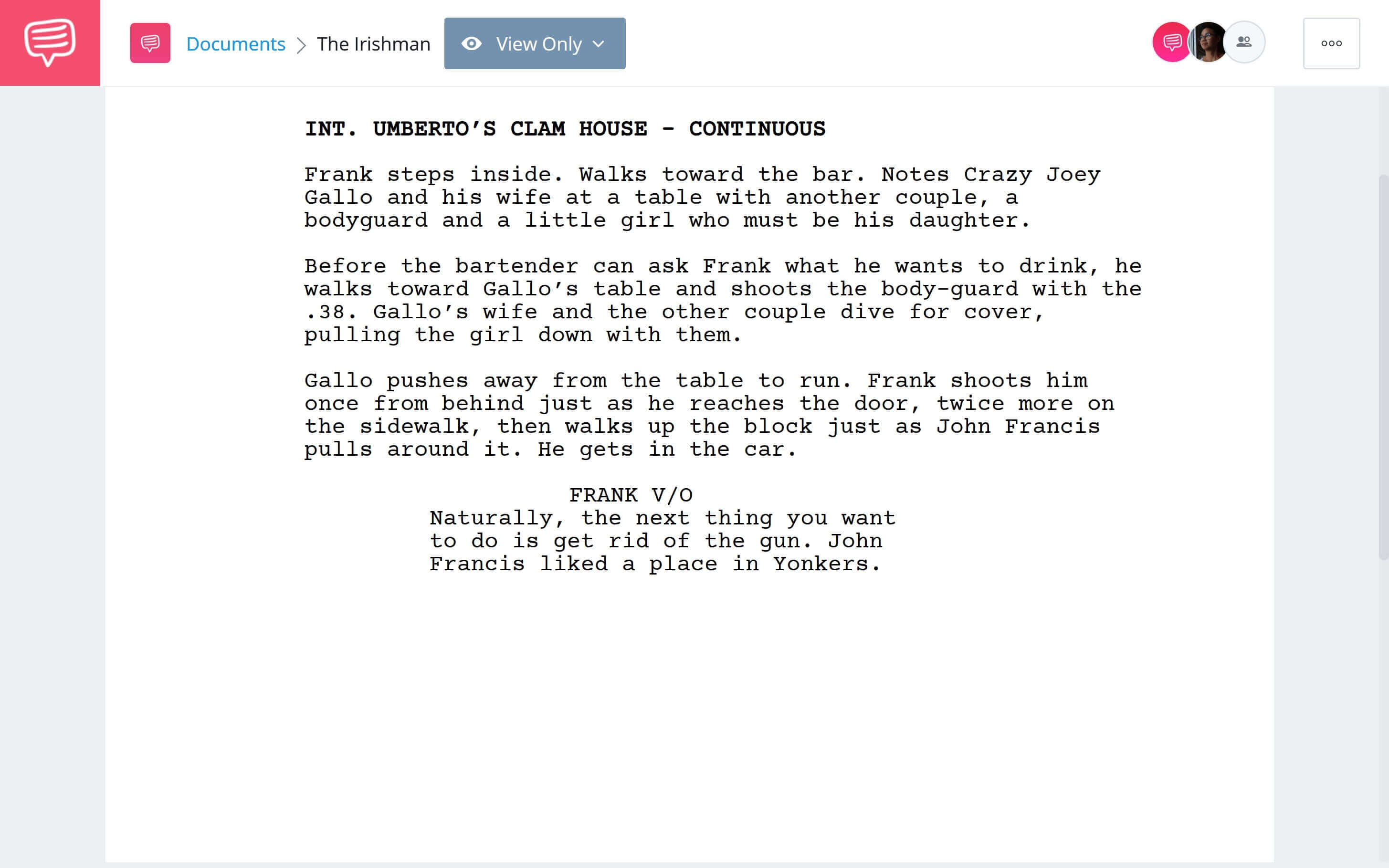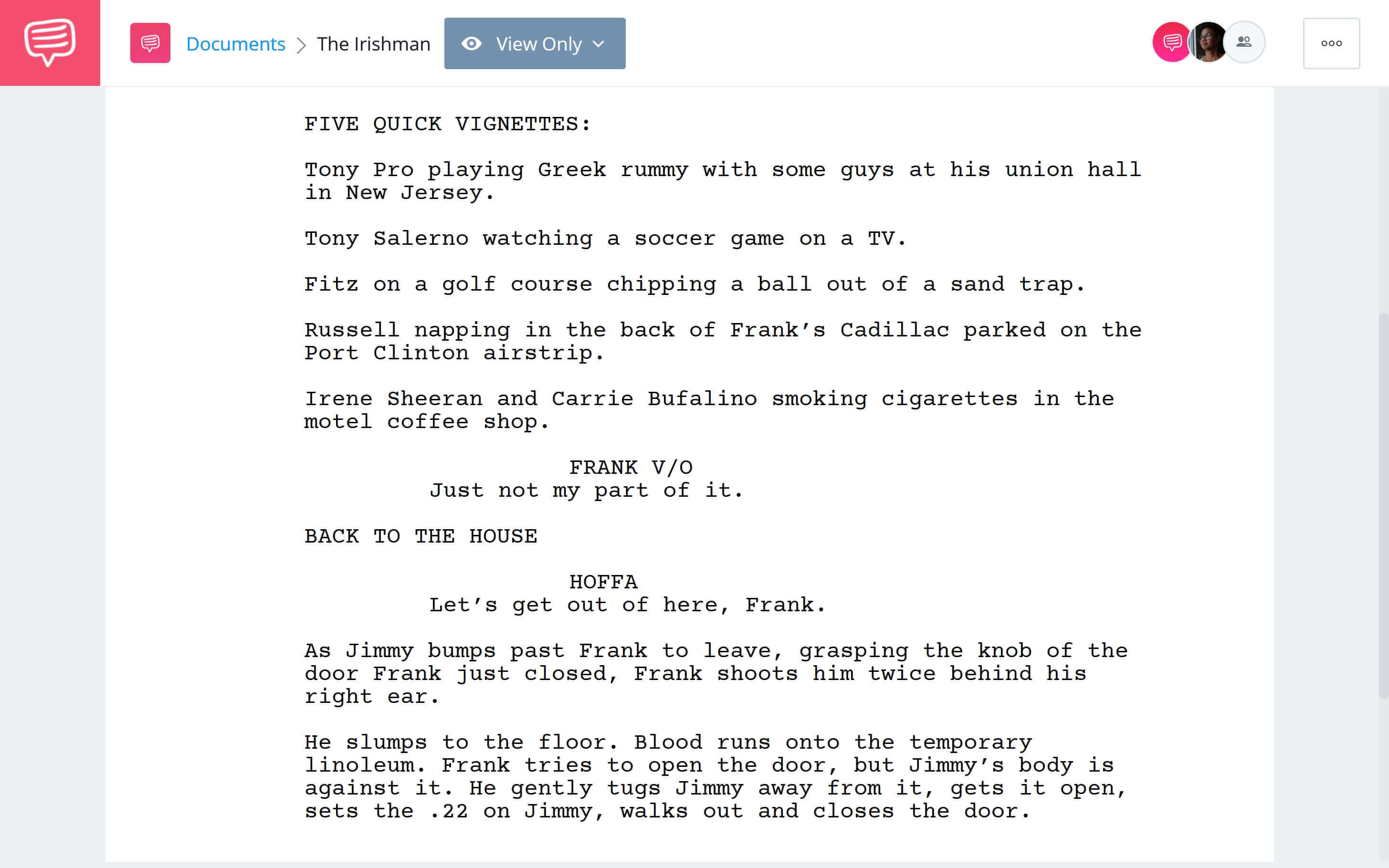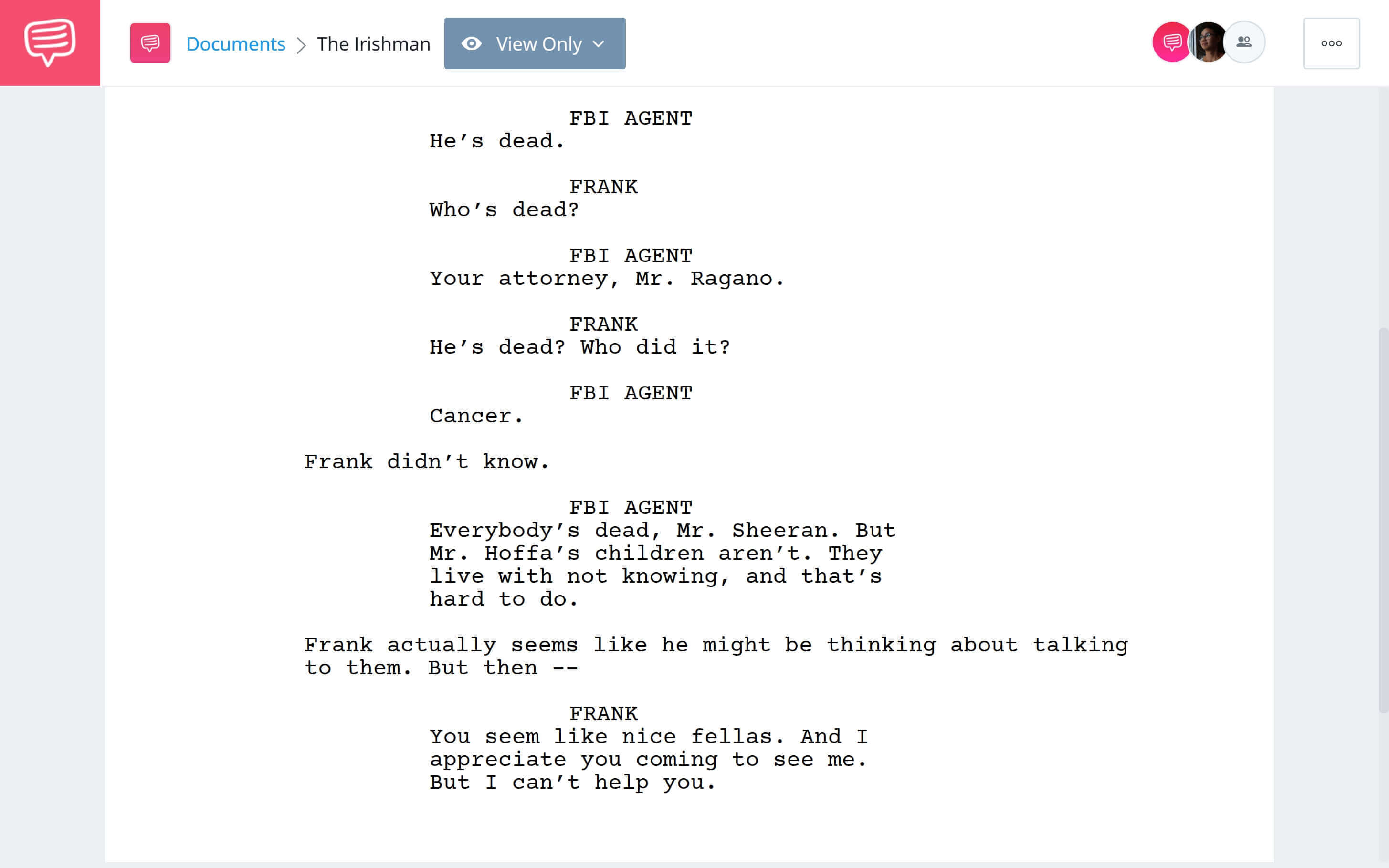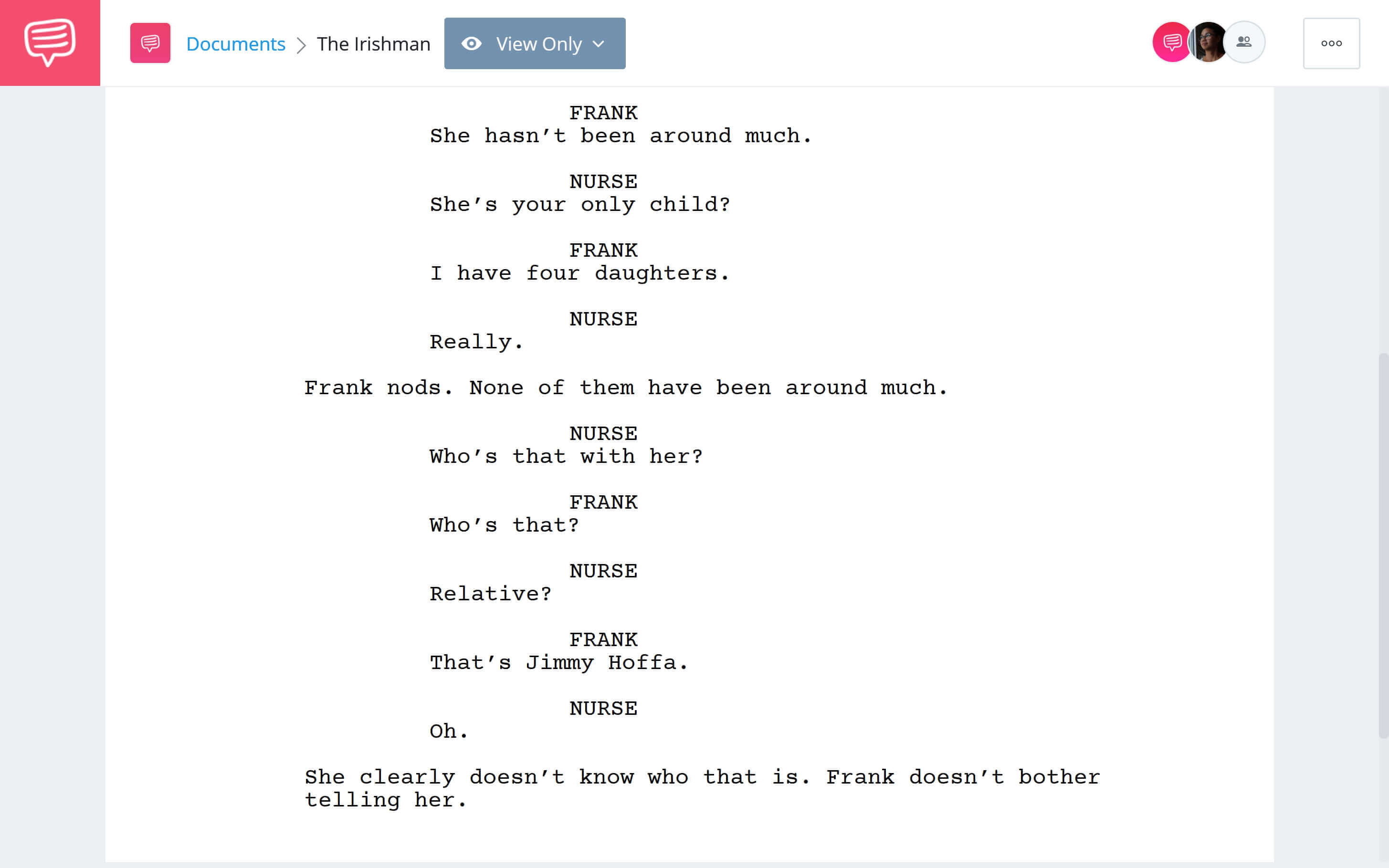The Irishman shook up the awards season when it was released on Netflix. With a 3.5-hour runtime spanning the career of Frank Sheeran, a known associate of Jimmy Hoffa, the Martin Scorsese-directed movie quickly became must-see viewing. But after watching the epic film, one question seems to come to mind. Is The Irishman ‘true story’ really that true?
It’s based on the life of Frank Sheeran, and for the most part, it seems to be an accurate retelling. However, there are a few plot points that have raised some eyebrows. After all, there’s a reason why they say The Irishman is based on a true story and not just a true story. Let’s look into how Scorsese adapted a story where the truth is still a mystery.
What is The Irishman About?
True elements in the film
Many of the details in The Irishman plot are accurate. Frank Sheeran did serve in World War II. He was an associate of Jimmy Hoffa, who actually did call him and say, “I heard you paint houses.” This was a euphemism to ask whether someone was a contract killer.
We imported the script into StudioBinder to isolate key moments but, if you're interested, we also conducted a full breakdown of The Irishman script including a PDF download.
The Real Irishman • Frank Beats Up Grocer • Read Full Scene
One incident in the screenplay shows Frank assaulting a grocer for pushing his daughter, Peggy. This was a real incident as reported by Sheeran’s other daughter, Dolores. It’s an important scene because it helps explain why Peggy never spoke to her father later in life once Jimmy Hoffa disappeared. She knew who her father really was.
Frank Assaults Store Owner • The Irishman
THE IRISHMAN FACT VS. FICTION
What we don't know for sure
Is The Irishman a true story? Mostly. The biggest doubts came when Sheeran admitted to killing “Crazy Joe” Gallo and Jimmy Hoffa himself. However, authorities have looked extensively into both cases and have concluded that the chances of Sheeran killing both men is likely untrue.
First, it’s important to recognize that the film is an adaptation of the novel I Heard You Paint Houses. The book consists of an interview with former homicide prosecutor Charles Brandt and Frank Sheeran, who passed away in 2003 before the book’s release the next year.
In the book, Frank confesses to carrying out murders on behalf of the Bufalino crime family. However, his details of the events of that time, particularly the two murders mentioned above, have always been under doubt. In many people’s minds, this negates the so-called 'Irishman true story.' Let’s look at those two plot points to see how Martin Scorsese adapted murky history into a compelling narrative.
The Irishman Explained
The problem with Frank's narration
The first thing to note about the film is its framing device. The movie opens with the audience being guided through an assisted living facility. We broke this scene down in greater detail — watch how Scorsese introduces us to Frank's world.
How Scorsese Opens an Epic • Subscribe on Youtube
The scene begins with voiceover narration that transitions into Frank speaking to this unnamed, unidentified interviewer. There’s an interesting interplay between Frank’s inner and outer monologues.
We hear from both his thoughts and what he’s willing to tell the interviewer. It’s supposed to make us question whether we can truly believe what he’s telling us.
The Irishman True Story • What Did I Know? • Read Full Scene
By establishing Frank as the narrator, we know we’re receiving details from his perspective. How does this relate to the set pieces we see later on that may not have actually happened?
Related Posts
WHO IS THE IRISHMAN BASED ON?
The death of “Crazy Joe” Gallo
A major turning point in the film is when Frank heads to a restaurant to murder “Crazy Joe” Gallo. It’s a brutal scene with Frank heading inside the building and shooting Gallo in front of his wife and daughter.
Is The Irishman a True Story? • Shooting Gallo • Read Full Scene
Now, this was a real event. Gallo was a mobster, and he was really shot outside a restaurant called Umberto’s Clam House, which has gone on to become a major historical landmark with tourists gathering from far and wide to see the spot Gallo was shot at.
The only problem is that it’s highly unlikely Frank was the murderer.
Reports at the time stated that the killer was about 5’8.” Frank is a huge man standing at 6’3.” Also, Frank isn’t the only person to have confessed to the crime. A man by the name of Joseph Luparelli confessed back in 1972. So, Frank’s claim is dubious, to say the least.
The Irishman's Real Characters
The disappearance of Jimmy Hoffa
The question of whether or not The Irishman is a true story mostly comes up in regards to the depiction of Jimmy Hoffa’s disappearance. It’s one of the greatest unsolved crimes in American history, and numerous people have claimed ownership of his death over the years, including Frank.
The Irishman Fact vs. Fiction • Shooting Hoffa • Read Full Scene
Again, it’s highly unlikely Frank Sheeran is the man who pulled the trigger. At most, FBI agents have stated that perhaps Frank was a bit player in the plot to take out Hoffa, but he probably wasn’t the killer.
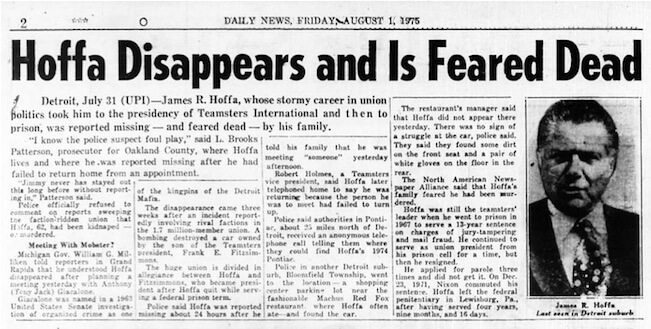
The Irishman Fact vs. Fiction: Hoffa's Disappearance
So while we can say The Irishman was certainly based on a true story, there are key details that don’t add up. So what is Scorsese trying to say by telling this story that’s demonstrably untrue?
Related Posts
Meaning in a True Story
Themes of The Irishman
As you look at Martin Scorsese’s films, it becomes clear he’s interested in very specific themes. Namely, he’s interested in concepts of legacy, sin, and guilt. And The Irishman touches on all those themes in spades. But let’s look at that first one: legacy.
We’ve just watched a three and a half hour epic about the life of Frank Sheeran. At the end of the film, it’s laid out plainly that everyone Frank worked with… is dead.
The Irishman True Story • All Alone • Read Full Scene
After Frank is told this, he has a chance to come clean. He can tell the FBI agent what he told Brandt but chooses not to. So, why come clean?
Because at the end of the day, Frank has nothing to show for his life of crime. While he rubbed shoulders with Hoffa and the teamsters, he neglected his family. Peggy saw what a monster he was and refused to talk to him later in life.
Not only is he without his friends, but his family wants nothing to do with him. He’s left alone in an assisted living center with nothing but his memories. Maybe he thinks that if he admits to killing Hoffa, everything will have been worth it. At least he’d have some kind of legacy. Something for people to remember him by.
Another scene to drive this theme is when Frank shows a nurse a picture of Jimmy Hoffa, asking her if she knows who it is.
The Irishman Ending • That’s Jimmy Hoffa • Read Full Scene
Over the course of the film, we see how powerful Jimmy Hoffa and his associates were. They fought for workers. They helped politicians rise to power. And yet, a single generation later, this woman has no idea who Jimmy Hoffa is, arguably the most infamous character of that collective.
If she’s never heard of Jimmy Hoffa, then what does that say of Frank’s legacy? Who will remember him?
No one.
The Irishman may take certain liberties, but it’s all in service of a central theme. By setting up that Frank is an unreliable narrator, Scorsese is able to explore themes of regret and legacy in a unique way while hinting to the audience that not everything we saw really happened.
Just like the final scene, the door isn’t closed on Jimmy Hoffa’s case yet.
Don’t Close the Door All the Way • The Irishman
Related Posts
UP NEXT
Best Robert De Niro Movies
Robert De Niro delivered one of the best performances of his illustrious career with the portrayal of Frank Sheeran in The Irishman. But where does it rank amongst his entire filmography? Take a look at StudioBinder’s ranking of De Niro's best acting roles.
